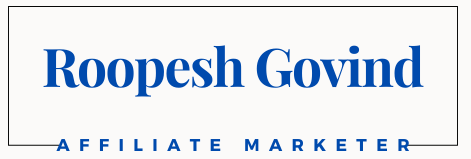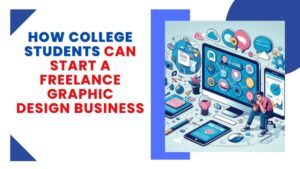Today, we are going to talk about the exciting world of freelance graphic design projects for college students. It’s not just about creating eye-catching designs; it’s also about carving out a unique space for yourself in the competitive creative industry.
In my opinion, freelancing while in college is a brilliant way to gain real-world experience and build a professional portfolio. You get to apply what you’re learning in classes to practical scenarios, craft a brand for yourself, and start establishing valuable industry connections early on.
It’s all about managing time effectively between client projects and your studies. The key is finding the sweet spot that allows you to excel both in class and in freelance gigs.
Even more, freelancing empowers you to understand the business side of design early on, which is a valuable skill set that will benefit you throughout your career.
If you are ready to get started with starting your online business, then click on the link that follows to begin.
FREE 4-STEP “CHEAT SHEET” :
Want To Build a PROFITABLE Online Business(but don’t know where to start?)
Finding the Right Freelance Graphic Design Projects
To get started, you need to find gigs that align with your skills and interests to build a fulfilling freelance career.
So, how do you identify your strengths and leverage them to find graphic design gigs that fit you best?
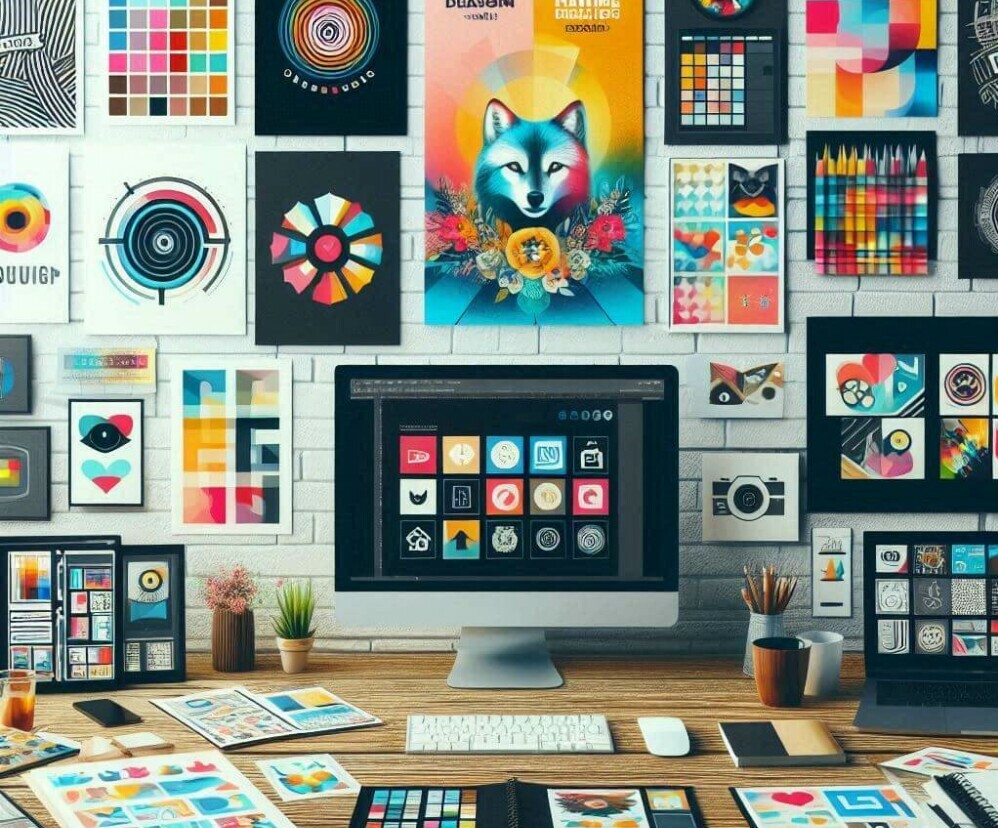
This is the importance of knowing your niche.
Whether you’re great at creating brand logos, animated graphics, or user interfaces, specializing will make you stand out in a crowded market.
Once you’ve defined your niche, it’s time to check the marketplaces — think websites like Upwork, Behance, or even Fiverr. These platforms are bustling with clients looking for your exact skill set.
And what about finding the right fit?
That’s going to include looking for projects that excite you and align with your personal and professional growth goals.
It’s not just about taking on any job; it’s about choosing ones that will build your portfolio and boost your reputation.
You’ll also want to perform due diligence on potential clients. Look for clear project briefs and reasonable budgets, and don’t shy away from asking questions. It’s your right to fully understand the project scope before committing.
Don’t worry too much about taking on a few lower-paid gigs initially, especially if they promise a great learning experience or a foothold in your niche.
Everybody has to start somewhere right?
Every completed project is a step toward more lucrative and high-profile work.
In my opinion, building strong relationships is also crucial. Always communicate effectively, meet deadlines, and exceed client expectations when possible. Happy clients can lead to repeat business and, even better, referrals.
Recommended Reading: How To Get Out Of Student Loan Debt
Building Your Portfolio with Impactful Projects
Your portfolio is your ticket to success in the competitive world of freelance graphic design.
It’s not just a collection of your work; it’s a testament to your skills, style, and versatility. Choosing the right projects to include can make all the difference.
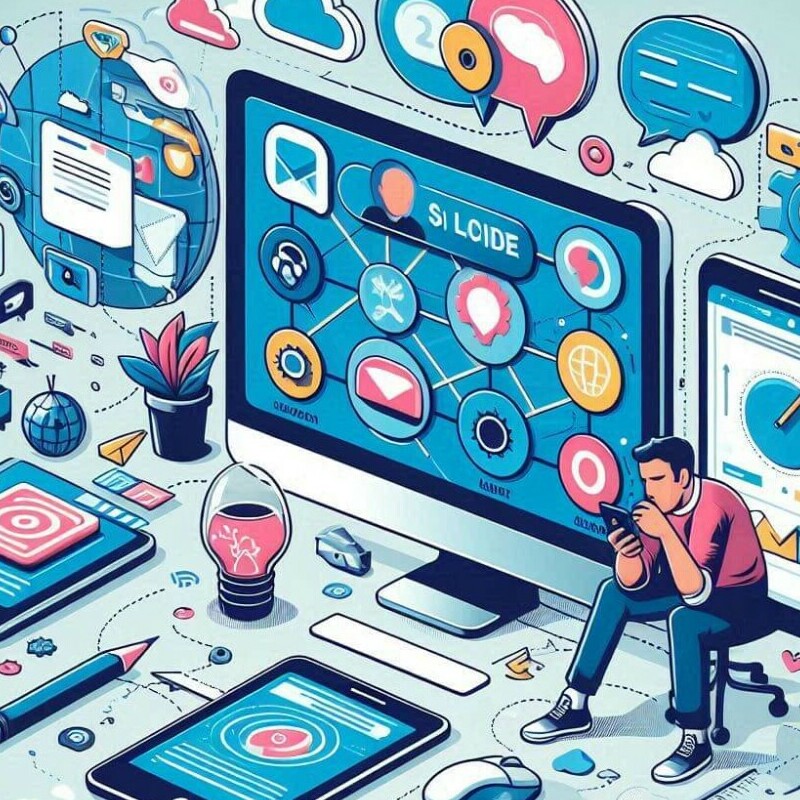
Your goal?
To stop potential clients in their tracks and make them say, ‘That’s exactly what I need!’
First up, diversity is key. You’ll want to include pieces that show you’re not a one-trick pony. Think branding, website design, packaging, social media graphics, and more. This isn’t just about showing off, it’s about demonstrating your ability to adapt to various client needs.
But it’s not just about quantity. Quality trumps volume every time.
Ensure each piece in your portfolio is something you’re proud of and reflects your best work. This is also about being strategic: choose projects that align with the type of work you want to get more of.
Love doing logos? Make sure your portfolio is heavy on brand identity.
Then there’s the online presence. A user-friendly, professional-looking online portfolio is crucial. It’s the how and where your work is displayed. Think of your online portfolio as your gallery – clean, organized, and inviting.
You can also bolster your portfolio’s authority by including testimonials from past clients. Positive feedback acts as social proof of your expertise and professionalism, reassuring new clients that they’re making the right choice.
Don’t shy away from asking clients for a few words about their experience with you after a project wraps up.
At the tail end of this section, let me nudge you toward the next big topic: affiliate marketing.
It’s a clever way to create an extra income stream as a freelancer. You’re going to find out how some of your projects can earn you more money over time by incorporating affiliate marketing strategies.
It’s not just about getting paid for the job at hand. Imagine creating graphic assets that continue to line your pockets long after you’ve handed them over.
Does that sound interesting?
Read the next section to learn more.
How To Use Affiliate Marketing Supplement Your Income
So, you’ve got the hang of snagging graphic design projects. Here’s something else that’s a game-changer: affiliate marketing.
I’m going to share how this can be more than just pocket change for you.
Affiliate marketing is a smart move for any freelancer looking to diversify their income.
It’s when you promote products or services and earn a commission for every sale made through your referral. Imagine designing a website and suggesting a hosting service you love. If they buy it, you get a cut!
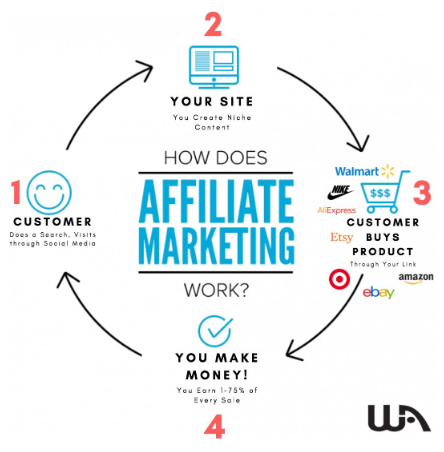
How do you get started with affiliate marketing? What niche e do you choose? How do I choose an affiliate program? Where can I get the best affiliate marketing training?
In my guide, I will walk you through the crucial first steps: – Identifying reputable affiliate programs that resonate with your audience. – Understanding the commission structures and payment terms. – Using your graphic design skills to create eye-catching promotional materials.
By leveraging your existing client base and online following, you can make a steady stream of passive income, provided you choose products that align with your brand and your clients’ needs. Remember, authenticity is key in affiliate marketing – only endorse products you truly believe in. Download my free guide.
How To Deal With Taxes, Invoicing, and Legalities
I’m going to lay it out straight – dealing with the financial and legal side of freelancing isn’t the most exciting part, but it’s crucial.
As a college student stepping into the world of freelance graphic design, you’ll need to get a handle on this to ensure your creative work translates into financial success.

First off, you’ve got to make sense of self-employment taxes. You’re not just creating art; you’re running a business, and that means you owe Uncle Sam his due come tax time.
It’s about understanding what you owe, keeping meticulous records, and possibly seeking advice from a tax professional.
Start with an invoicing system that’s professional and reliable. Whether you create templates or use software, the goal is to get paid the right amount, on time.
Invoicing isn’t just a formality; it’s also about communication.
Clearly outline the scope of work, payment terms, and due dates. And remember, follow-ups are key; don’t be shy about nudge reminders. Choose something that resonates with you and makes your life easier.
And let’s chat about the legal side. Contracts might seem intimidating, but they’re your best friend in freelance graphic design.
They protect both you and the client, clarify expectations, and provide a roadmap for the project. A solid contract covers the scope of work, deadlines, revisions, payment terms, and intellectual property rights. Not every client will bring one to the table, so it’s often on you to have a template ready to go.
In my opinion, you can’t afford to skip this step. It just takes one difficult client or a misunderstanding to appreciate the value of having everything in black and white. So equip yourself with a basic legal understanding or seek legal counsel if necessary. Your future self will thank you.
There’s a lot of opportunity in freelance graphic design, and while the administrative stuff might not be the highlight, it supports the more enjoyable creative process.
You don’t have to have it all figured out from your first project, but as you progress, you’ll find these elements are as essential to your freelance business as the designs you create.
Wishing you everything of the best in your freelance business as a college student.
If you want to learn about affiliate marketing, then get the Insider’s Guide To Marketing For Just $2
Or, if you are serious about building an online business on the side, then Enroll for The 5-Day Business Builder Challenge Here.
Regards and Take Care
Roopesh
